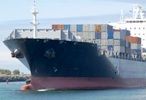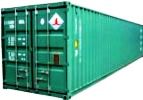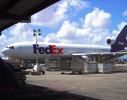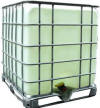| Mubychem Group, established in 1976, is the pioneer manufacturer of Boric Acid, Pharmaceutical, Fragrance & Flavor chemicals in India. Mubychem Group has several manufacturing facilities spread across Gujarat and Mumbai India and world wide contacts and toll manufacturers. We are exporting globally to countries like USA, Canada, Europe, UAE, South Africa, Tanzania, Kenya, Egypt, Nigeria, Uganda, Turkey, Mexico, Brazil, Chile, Argentina, Dubai etc. |
The participating units have one or more accreditations like FDA - GMP approval; ISO-9001 Certified; "REACH"registered; ISO-22000; Kosher Certified;Halal Certified; HACCP. We offer Pure & IP BP USP FCC Food Grade ACS AR Analytical Reagent Grades of Chemicals | |







Boric Acid MSDS Sheet, Manufacturers
Boric Acid USP NF BP ACS IP grade Manufacturers
Boric Acid MSDS Sheet, Material Safety Data Sheet
1. Product Identification
Synonyms: ortho-Boric acid; boracic acid; Borofax, boric acid (H3BO3)
CAS No.: 10043-35-3
Molecular Weight: 61.83
Chemical Formula: H3BO3
2. Composition/Information on Ingredients
Ingredient: Boric Acid
CAS No.: 10043-35-3
Percent: 100%
Potential Acute Health Effects: Boric Acid is hazardous in case of skin contact (irritant), of eye contact (irritant), of ingestion, of inhalation. Slightly hazardous in case of skin contact (permeator)
Potential Chronic Health Effects:
Carcinogenic Effects: Not available.
Mutagenic Effects: Mutagenic for bacteria and/or yeast.
Teratogenic Effects: Not available.
Developmental Toxicity: Classified Reproductive system/toxin/female, Reproductive system/toxin/male. The substance may be toxic to kidneys, cardiovascular system, central nervous system (CNS). Repeated or prolonged exposure to the substance can produce target organs damage.
4. First Aid Measures
Inhalation: Remove to fresh air. If not breathing, give artificial respiration. If breathing is difficult, give oxygen. Call a physician.
Ingestion: Do NOT induce vomiting unless directed to do so by medical personnel. Never give anything by mouth to an unconscious person. Loosen tight clothing such as a collar, tie, belt or waistband. Get medical attention if symptoms appear.
Skin Contact: Remove any contaminated clothing. Wash skin with soap or mild detergent and water for at least 15 minutes. Get medical attention if irritation develops or persists. Wash cloths and Shoes before re-use.
Eye Contact: Check for and remove any contact lenses. In case of contact, immediately flush eyes with plenty of water for at least 15 minutes. Cold water may be used. Get medical attention.
5. Fire Fighting Measures
Fire: Boric Acid is not considered to be a fire hazard.
Explosion: A mixture of potassium and boric acid may explode on impact.
Fire Extinguishing Media: Use any means suitable for extinguishing surrounding fire.
Special Information: In the event of a fire, wear full protective clothing and NIOSH-approved self-contained breathing apparatus with full face piece operated in the pressure demand or other positive pressure mode.
6. Accidental Release Measures
Small Spill: Use appropriate tools to put the spilled solid in a convenient waste disposal container. Finish cleaning by spreading water on the contaminated surface and dispose of according to legal authority requirements.
Large Spill: Use a shovel to put the material into a convenient waste disposal container. Finish cleaning by spreading water on the contaminated surface and allow to evacuate through the sanitary system.
7. Handling and Storage
Keep Boric Acid in a well closed container stored under cold to warm conditions, 2 to 40 C, (36 to 104F). Protect against physical damage. Carbon steel or aluminum containers are suitable for storage. Stainless steel is needed for moist conditions. Use good housekeeping practices to prevent accumulation of dust and follow sound cleaning techniques that will keep airborne particulates at a low level. Wash hands after handling this material. Avoid contact especially when skin is cut or abraided. Containers of Boric Acid may be hazardous when empty since they retain product residues (dust, solids); observe all warnings and precautions listed for the product.
8. Exposure Controls/Personal Protection
Airborne Exposure Limits: None established.
Ventilation System: A system of local and/or general exhaust is recommended to keep employee exposures as low as possible. Local exhaust ventilation is generally preferred because it can control the emissions of the contaminant at its source, preventing dispersion of it into the general work area. Please refer to the ACGIH document, Industrial Ventilation, A Manual of Recommended Practices, most recent edition, for details.
Personal Respirators (NIOSH Approved): For conditions of use where exposure to dust or mist is apparent and engineering controls are not feasible, a particulate respirator (NIOSH type N95 or better filters) may be worn. If oil particles (e.g. lubricants, cutting fluids, glycerin, etc.) are present, use a NIOSH type R or P filter. For emergencies or instances where the exposure levels are not known, use a full-face positive-pressure, air-supplied respirator. WARNING: Air-purifying respirators do not protect workers in oxygen-deficient atmospheres.
Skin Protection: Gloves and lab coat, apron or coveralls.
Eye Protection: Use chemical safety goggles. Maintain eye wash fountain and quick-drench facilities in work area.
9. Physical and Chemical Properties
Appearance: Boric Acid is white powder or granules.
Odor: Odorless.
Solubility: 1g/18mL in cold water.
Density: 1.43
pH: 5.1 Aqueous solution: (0.1M)
% Volatiles by volume @ 21C (70F): 0
Boiling Point: Decomposes.
Melting Point: 169C (336F)
Vapor Density (Air=1): No information found.
Vapor Pressure (mm Hg): 2.6 @ 20C (68F)
Evaporation Rate (BuAc=1): No information found.
10. Stability and Reactivity
Stability: Boric Acid is stable under ordinary conditions of use and storage. If moisture is present, boric acid can be corrosive to iron.
Hazardous Decomposition Products: Loses chemically combined water upon heating, forming metaboric acid (HBO2) at 212-221F, then pyroboric acid (H2B4O7) at 285-320F, and Boric anhydride at higher temperatures.
Hazardous Polymerization: Will not occur.
Incompatibilities: Potassium, acetic anhydride, alkalis, carbonates, and hydroxides.
Conditions to Avoid: No information found.
11. Toxicological Information
Toxicological Data: Oral rat LD50: 2660 mg/kg; oral woman LDLo: 200 mg/kg; investigated as a mutagen, tumorigen, reproductive effector.
Reproductive Toxicity: May impair fertility. May cause harm to the unborn child.
--------\Cancer Lists\------------------------------------------------------
---------------------------- NTP Carcinogen---
Ingredient -----------------
Known Anticipated IARC Category
---------------------------- ----- - ----------- - -------------
Boric Acid (10043-35-3) ---- No ---- No ---------- None
12. Ecological Information
Environmental Fate: Boric acid: 48 Hr EC50 water flea: 115.0 mg/L [Static]
Environmental Toxicity: The EC50/48-hour values for daphnia are over 100 mg/l. This material may be toxic to aquatic life.
13. Disposal Considerations
Whatever cannot be saved for recovery or recycling should be managed in an appropriate and approved waste disposal facility. Processing, use or contamination of this product may change the waste management options. State and local disposal regulations may differ from federal disposal regulations. Dispose of container and unused contents in accordance with federal, state and local requirements.
14. Transport Information
Not regulated.
15. Regulatory Information
--------\Chemical Inventory Status - Part 1\--------------------------------- Ingredient ------------------------------------ TSCA EC Japan Australia ----------------------------------------------- ---- --- ----- --------- Boric Acid (10043-35-3) ----------------------- Yes Yes Yes Yes --------\Chemical Inventory Status - Part 2\--------------------------------- ----------------------------------------------------- --Canada-- Ingredient ------------------------------------ Korea DSL NDSL Phil. ----------------------------------------------- ----- --- ---- ----- Boric Acid (10043-35-3) -------------------- Yes Yes No Yes --------\Federal, State & International Regulations - Part 1\---------------- ----------------------------------------- -SARA 302- ------SARA 313------ Ingredient ------------------------------ RQ TPQ List Chemical Catg. ----------------------------------------- --- ----- ---- -------------- Boric Acid (10043-35-3) ----------------- No No No No --------\Federal, State & International Regulations - Part 2\---------------- ---------------------------------------------------- -RCRA- -TSCA- Ingredient ------------------------------ CERCLA 261.33 8(d) ----------------------------------------- ------ ------ ------ Boric Acid (10043-35-3) ----------------- No No No
Chemical Weapons Convention: No; TSCA 12(b): No; CDTA: No
SARA 311/312: Acute: Yes; Chronic: Yes; Fire: No; Pressure: No
Reactivity: No (Pure / Solid)
Australian Hazchem Code: None allocated.
Poison Schedule: S5
OSHA: Hazardous by definition of Hazard Communication Standard (29 CFR 1910.1200).
WHMIS (Canada): CLASS D-2A: Material causing other toxic effects (VERY TOXIC).
DSCL (EEC):
R36/38- Irritating to eyes and skin. R40- Possible risks of irreversible effects. R62- Possible risk of impaired fertility. S24/25- Avoid contact
with skin and eyes.
HMIS (U.S.A.):
Health Hazard: 2
Fire Hazard: 0
Reactivity: 0
Personal Protection: E
National Fire Protection Association (U.S.A.):
Health: 1
Flammability: 0
Reactivity: 0
Specific hazard:
Protective Equipment:
Gloves. Lab coat. Dust respirator. Be sure to use an approved/certified respirator or equivalent. Wear appropriate respirator when ventilation is inadequate. Splash goggles.
16. Other Information
Disclaimer:**********************************
Our company provides this Boric Acid MSDS information sheet contained herein in good faith but makes no representation as to its comprehensiveness or accuracy. This Boric Acid MSDS sheet is intended only as a guide to the appropriate precautionary handling of the material by a properly trained person using this product. Individuals receiving the information must exercise their independent judgment in determining its appropriateness for a particular purpose.
**********************************
Boric Acid Manufacturers:
MUBYCHEM GROUP
CHINCHBUNDER, MUMBAI 400009, INDIA
TEL: (OFFICE) 91-22-23774610, 91-22- 23723564. 91-22-23728264
e-mail: anmol@pcmenergy.com

Copyright and Usual Disclaimer is Applicable.
Global or International Boric Acid Suppliers, Exporters, Importers, Manufacturers
If I give you “My Word” Nobody can undo it.
If I sign an “Agreement” my Lawyer will undo it
Perfection is made up of small thing but it is not small.

